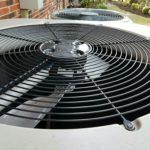Here in the South Hills of Pittsburgh, the plumbing issue that generates our largest number of emergency calls is a sewer backup. Pittsburghers aren’t alone in this emergency: insurance company Nationwide says there are more than half a million sewer backups every year in the United States. And the Civil Engineering Research Foundation says that this number is growing by about three percent every year.
If you haven’t experienced a sewer back up in your home, that’s great. But the prevalence of this issue indicates that at some point, you may.
We always say that preparation prevents emergencies – or at least lessens their impact. So today we are going to discuss how to solve a sewer backup. Here’s how we’ll proceed:
What to do if sewage backs up into your home
Let’s get started!
What to do if sewage backs up into your home
You won’t have trouble recognizing an active sewer backup. It consists of thick, dark, sludge-like water bubbling or even gushing through a plumbing fixture or drain that is supposed to be an exit, not an entry point, for wastewater.
It’s stressful and even scary, and you may not have a ton of time to react. We’re here to help.
Here’s what to do, in order of importance:
Shut off the water supply
In a sewer backup, shutting off the water supply can mean the difference between an inconvenience and a disaster.
For this reason, stopping the flow of water is your critical first step. It suspends the water’s momentum, lessens the volume that ends up in your home, and contains the damage.
If sewage is entering from a toilet:
A toilet is the most common fixture for sewer backups. When this is the case, halt the water supply to that toilet specifically by using its stop valve.
Your toilet’s stop valve is likely located near the floor, behind, or to the left of the toilet. It often has an oblong shape like a football.
To shut it off, simply turn it clockwise (to the right).
If sewage is entering from a sink:
Halt the water supply to the sink using its two stop valves – one for cold water and one for hot water. These are usually located underneath the faucet, often inside a cabinet.
Just as with a toilet stop valve, turn both sink stop valves clockwise (to the right) to shut them off.
If you can’t reach the offending fixture’s stop valve:
Sometimes stop valves are obstructed by an unfolding emergency (like spraying water), or they’re simply inaccessible (such as with tubs and showers that have stop valves behind a wall). And sometimes a sewage backup is not entering through a fixture but a floor drain.
If any of these scenarios is the case, shut off your whole home’s water supply using the main shutoff valve.
The main shutoff valve is usually located near the point where the water enters your house. This may be next to your water meter, crawlspace access, garage, or utility area like a laundry room.
Pittsburgh homes almost always have indoor main water shutoff valves. But homes in warmer climates often have water shutoff valves located outside in an underground box near the city water supply line.
The main water shutoff valve is typically one of the following:
- A circular spigot (called a gate valve). To shut this off, turn it clockwise (to the right) until it won’t turn any farther.
- A lever-style handle (called a ball valve). To shut this off, turn it 90 degrees to the right.
If and when you’re not in an emergency situation, here are some additional things you can do to make any water shutoff task fast and relatively easy:
- Get the right tools for the job and keep them handy. Here is a great list of shutoff tools for both water and gas, including pros, cons, and buying advice.
- Know all the different types of stop valves you might find. Here is a list, with images, of common stop valves. Consider taking this list on a self-guided plumbing tour of your house.
Do as much cleanup as you safely can
If your sewage backup occurred through a toilet, and if you were able to shut off the water quickly, cleanup might require only plunging and a heavier-duty version of your typical bathroom cleaning. We recommend you use gloves and bleach.
However, if your sewage backup was more severe or affected more square footage, a major cleanup could be in order. Here are some suggestions on how to proceed:
- Cover yourself with long sleeves, long pants, gloves, and waterproof boots. Consider a mask and goggles too. Sewage is hazardous waste; you want to minimize your contact with it.
- Shovel any solid matter into contractor-grade trash bags and tightly seal them.
- Use a shop vacuum to remove standing water.
- Use fans and portable dehumidifiers to dry out the area.
- Consider bringing in a professional cleaning and restoration company. This type of company will assess hidden as well as obvious water damage, repair it with specialized equipment, and sanitize the area so it is once again safe to inhabit.
For severe or recurring backups, contact your sewer authority
A sewer backup may not mean an issue with your home’s sewer system, but with the city’s or county’s. Many areas in and around Pittsburgh (and throughout the U.S.) have combined storm and sewer drainage systems that become overwhelmed in heavy rains.
Local water/sewer authorities often offer 24/7 help with backups, and they may be able to work with you to prevent future ones. For these reasons, you may want to report your sewer backup to the appropriate local authority.
For our Pittsburgh area customers, here is some contact information:
- Pittsburgh Water and Sewer Authority (serves Allegheny County): 412.255.2423
- Washington County Sewage Council: 724.223.0504
- Peters Township Sewer Authority: 724.941.6709. During after-hours, weekends, or holidays: 724.263.7166
Note that you may need to contact the public works department in the township or borough where you live as well.
Contact a quality plumber
A professional plumber is a lifeline during a sewer backup, especially when:
- You need help managing the emergency.
- A fixture or drain is no longer operational, even if you’ve managed to quell the emergency.
- You need a diagnosis for your sewer backup (more on that in a bit).
Regarding how to choose a plumber to help with your sewer backup, here are a few things to keep in mind:
- Ensure that the plumber offers emergency services, and is transparent about how those services work. You can learn about Kowalski’s emergency services here.
- Ensure that the plumber provides an easy-to-find phone number that you can call around the clock. Our phone numbers are 745.7404 and 412.952.5923 (the 412 number also accepts texts).
- See if you can find a page on the plumber’s website that features their team, with photos and names. This page is usually called “About” or “Company” or “Team.” Such a page is a sign that the plumber invests in good employees, accepts accountability, and provides consistent service. Why is this important? Many plumbing companies have a lot of staff turnover or a very extended team. This means that customers often get different technicians for emergency calls than they do for follow-up calls. The result can be a disjointed or prolonged service experience with too many breakdowns in communication.
You can get to know the Kowalski team here.
- Read the plumber’s customer reviews, along with their responses to those reviews. Obviously, positive reviews from a variety and number of customers are a good sign that a plumber is skilled and legitimate. Responses to those reviews indicate that the plumber is also engaged and attuned to customers.
You can read Kowalski reviews and responses here.
Diagnosing Sewer Backups
Once your sewer backup emergency is under control, a good plumber will be able to diagnose the cause of the problem and fix it.
Sewer backups can have a number of causes:
A clogged pipe
The most common cause of a sewer backup is a clogged pipe. And most clogs are the result of what’s been flushed down a toilet.
Never flush the following items:
- Feminine products or diapers. They blow up like a balloon and obstruct proper drainage.
- “Flushable” wipes. They do flush, which is why they get the “flushable” label. But they do not break down in the water the way toilet paper does, so they are hostile to septic systems. They accumulate and sit in your drainage pipes, eventually causing a backup.
The good news regarding a clogged toilet (or other fixture such as a sink, tub, or shower) is that breaking up and removing a clog is generally easy to do with an electric eel. With this tool, your plumber should be able to clear the pipe in question and get the fixture operational again quickly.
Deteriorating or broken pipes
Often a clog isn’t a standalone problem, but rather the symptom of a structural issue with a pipe, or the network of piping, in and around your home.
A good plumber will be able to inspect your sewer line with a specialized camera attached to a flexible cable. With video inspection, your plumber can identify the cause of your sewer backup, which can include:
- Aging pipes. This is a common issue in the Pittsburgh area, where many neighborhoods feature homes more than 50 years old. A house of that age usually has clay piping, which cracks and crumbles over time, and eventually must be replaced.
- Poor pipe “fall.” All sewer lines are designed to slope at specific angles that enable proper flow away from your home. Over time, ground erosion and sinkage can impede the fall of your pipes, causing them to lie at angles that trap sewage rather than drain it.
- Root invasion. Trees and other shrubbery look for water, which they find in your water line. Over time, especially with an older drainage system, their roots can breakthrough, intertwine with, and collapse your piping – thus creating clogs in your sewage system.
Preventing Sewer Backups
As a homeowner, you have more control over the frequency and severity of sewer backups than you might think. There is a range of things you can do to avoid them or at least minimize their damage and protect the health of your sewage system in general.
Practice Good Sewer Hygiene
To prevent sewer backups, here are some habits that you can adopt:
- Never flush feminine products, diapers, or “flushable” wipes down the toilet. We covered this earlier, but it’s worth mentioning again. Even one of these items is a harmful, foreign object in your drain line. It can quickly cause a clog and lead to a backup. Also, don’t be fooled by the packaging of these items, which often says “safe” and “non-toxic.” That may be true for people, but it is absolutely not true for your septic system.
- Consider purchasing a lock for your toilet lids if you have young children. Kids and toddlers sometimes like to play the “let’s see if it flushes” game with their toys and other objects.
- Don’t pour grease or fat down your drains. It builds up in your pipes, preventing the flow of water and debris, and eventually causing clogs that invite backups.
- Regularly remove hair from the drains in your sink, tub, and shower. Hair is a huge contributor to clogs, but you can combat this phenomenon with a simple and inexpensive plumbing snake. You can also use liquid drain cleaners, but a word of caution: we recommend using eco-friendly ones, because the harsh chemicals in other cleaners damage your pipes over time. Note that any liquid drain cleaner takes time to clear a clog, whereas a snake provides an immediate fix.
- Keep an eye (and ear and nose) on your fixtures. As a homeowner, you know your house. We invite you to hone that knowledge. Pay attention to how your fixtures behave, sound, and smell when you use them, and take note of anything unusual. A slower drain, bubbling or pooling water, gurgling sounds, and bad odors are all indications of a clog that’s growing worse, and may require the attention of a plumber.
- Turn off the water supply to your home whenever you go on vacation. We recommend doing this even if you’re away for only a weekend. It won’t prevent a sewer backup, but it will save your home from a lot of damage if a backup happens, or if an undetected leak persists, while you’re gone. The volume of water that can enter your home in a very short amount of time is staggering, devastating, and costly. Save yourself this kind of crisis by taking a few seconds to shut off your water as you’re leaving for a trip.
Address Problematic Sewer Lines
Regarding your options for preventing recurring sewer backups caused by aging or decaying pipes, you have several options. The solution you choose depends on the severity of the problem, the project size you’re comfortable with, and your budget. A good plumber will be happy to discuss all of these things with you.
Here are some options that your plumber might recommend:
Cleaning, repairing or replacing sewer traps
A sewer trap is a U-shaped section of piping under a plumbing fixture. It is designed to hold a small amount of water at all times, which serves as a seal against escaping sewer gas.
Sewer traps come in various sizes and configurations that are designed for different types of fixtures and piping. Your plumber can help you determine the best type of sewer traps for your home, and repair or replace yours accordingly.
Installing an exterior cleanout
An exterior cleanout is an access point to your sewer line. As its name suggests, it is installed outside, typically right where your sewer line exits your house. A cleanout provides an opening that you or your plumber can use to clean and inspect the line and to more easily remove blockages.
If you have a newer home, you may already have an exterior cleanout. It can be well hidden in your yard under shrubbery or landscaping. It looks like a round, capped pipe, and is usually black or white in color.
Installing a backflow preventer
Also called a backwater valve, this is a device with check and relief valves that prevent wastewater from entering your home. It is often installed in the main sewer pipe outside your home, or in the sewer pipe in your basement. A backflow preventer is often your best bet when your sewer backups occur through floor drains.
There are various types of backflow preventers, including manual ones for infrequent and predictable backups, and automatic models for recurring backups. Automatic backflow preventers detect the flow of water in the wrong direction, close when necessary, and open again on their own.
Installing a sewer liner
A sewer liner is a flexible tube inserted into your existing sewer line in order to reinforce it. The liner hardens once installed, acting as a buffer against cracks, leaks, corrosion, and encroachment.
Sewer liners are installed via multiple small access points and don’t require a full dig. Today’s sewer liners have a life expectancy of up to 50 years, which rivals that of the piping itself.
Replacing your sewer line
If your home is an older one, you likely have clay or cast iron pipes that are reaching – or have already reached – the end of their lifespan. In this case, you may need to replace all or part of your water and sewer lines with modern PVC piping. PVC is a lightweight and flexible yet durable material that makes for a strong, long-lasting sewer system.
PVC piping is a great investment in your home. It has a lifespan of up to 80 years, so it will likely benefit not only you but the homeowners who come after you (and possibly the ones after them). Sewer pipe replacement is the most involved solution to your sewer backup issues: it involves digging up your yard and can cost upwards of several thousand dollars. But it is also the most thorough solution for aging or poorly performing sewer lines, and sometimes is the most appropriate fix.
_____________
We hope we’ve helped you solve any sewer backup issues you have, and prepare for those you might have in the future. If you have any questions, or if you’re concerned about any aspect of your plumbing, Kowalski is here with answers and help. Contact us any time! We look forward to serving you.





